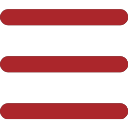


Cutting and sewing machines are indispensable tools in various industries, including textiles, garment manufacturing, upholstery, and crafts. These machines perform vital functions in cutting fabric and stitching seams with precision and efficiency. However, to ensure optimal performance and longevity, it is essential to master the operation techniques and adhere to proper maintenance practices. In this comprehensive guide, we will explore the operation techniques, troubleshooting tips, and maintenance methods for cutting and sewing machines.
Choose the appropriate thread for your fabric and sewing project. Ensure correct threading of the machine, including the upper thread, bobbin, and needle. Follow the machine's threading guide meticulously to prevent thread breakage and stitching issues.
Prepare your fabric by properly aligning and smoothing it before cutting and sewing. Use fabric weights or pins to secure the fabric layers and prevent shifting during cutting and stitching.
Master the art of cutting fabric with precision and accuracy. Use sharp fabric scissors or rotary cutters to ensure clean and straight cuts. Pay attention to grainlines and pattern markings for accurate fabric alignment.
Practice different stitching techniques, including straight stitch, zigzag stitch, and decorative stitches, to achieve desired sewing outcomes. Maintain consistent stitch length and tension for professional-looking seams.
Explore various seam finishing methods, such as serging, overlocking, or zigzag stitching, to prevent fraying and enhance seam durability. Experiment with different seam allowances to find the optimal width for your project.
If you encounter thread tension problems such as loose or tight stitches, check the tension settings and adjust them accordingly. Clean the tension discs and thread path to remove any debris or lint that may affect thread tension.
Needle breakage can occur due to incorrect needle size, dull needles, or fabric jams. Use the appropriate needle size and type for your fabric. Replace dull or damaged needles regularly to prevent breakage and ensure smooth stitching.
If the fabric gets jammed in the machine, stop sewing immediately and remove the fabric carefully. Check for any obstructions or tangled threads in the needle plate, feed dogs, or bobbin area. Clean the machine regularly to prevent fabric jams.
Uneven stitching may result from incorrect machine settings, uneven fabric feeding, or needle deflection. Ensure that the machine is properly calibrated and adjusted for the fabric thickness and type. Check the feed dog mechanism for smooth and consistent fabric feeding.
If the machine motor or drive belt malfunctions, inspect them for signs of wear, damage, or misalignment. Tighten or replace the drive belt as needed to maintain proper machine operation. Lubricate the motor and moving parts regularly to reduce friction and prolong their lifespan.
Regularly clean the cutting and sewing machine to remove dust, lint, and debris that can accumulate in the needle plate, feed dogs, and bobbin area. Use a soft brush, compressed air, or lint roller to clean hard-to-reach areas.
Apply sewing machine oil or lubricant to the moving parts, such as the needle bar, presser foot mechanism, and feed dog assembly, to reduce friction and prevent wear. Refer to the machine's manual for specific lubrication points and intervals.
Check the tension of the machine's drive belt regularly and adjust it as needed to maintain proper tension and smooth operation. Replace worn or damaged drive belts promptly to prevent machine malfunctions.
Replace the sewing machine needle regularly to ensure optimal stitching performance. Use high-quality needles suitable for your fabric and sewing project. Inspect the needle for bends, burrs, or dullness and replace it if necessary.
Periodically, schedule professional servicing and maintenance for your cutting and sewing machine to keep it in top condition. A qualified technician can inspect and tune up the machine, identify any potential issues, and perform necessary repairs or adjustments.
In conclusion, mastering the operation techniques and maintenance methods for cutting and sewing machines is essential for achieving optimal performance, efficiency, and longevity. By following proper procedures, troubleshooting tips, and maintenance practices, you can ensure smooth and reliable operation of your machine, resulting in professional-quality sewing results and extended machine lifespan.